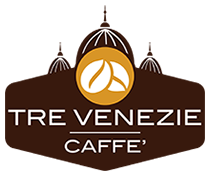Select Language
About
The History of Tre Venezie
The coffee reached Europe in the second half of 1600. During the great vessels that crossed the Mediterranean age, it was been introduced in our continental trades.Venice was the first Italian city that experienced the coffee aroma, and then it spread throughout the whole Peninsula. It became a benchmark for not only Italians but also from other countries merchants, especially from central and northern Europe.
Venetians were the firsts to learn all about this beverage both for its characteristic good taste, but also to take advantage from its medicinal and digestive properties. Starting from Venice onwards, the coffee crossed the West, becoming famous and appreciated. Once again, the lagoon city followed its nature as a bridge between East and West by importing and transforming an eastern beverage into a western coffee..
Whom We Are Marketing To
Thanks to specific products fulfilment, our business strategy is able to satisfy different vending trades. Our skilled staff manage our distribution network in order to increase the sales volume and Gruppo Gimoka S.p.a. brand diffusion process. We approach to vending channel in offering different and exclusive coffee blends coming from the best world plantation to guarantee the best performance for automatic distributor machine both in taste both in creaminess.Furthermore, Gruppo Gimoka S.p.a. produces single-portion products available in different flavours for the following coffee machine systems: Lavazza A Modo Mio, Lavazza Blue, Nespresso, ESE, Lavazza Espresso Point, D32, Keeurig, Dolce Gusto. Our capsules are the latest generation market production with an excellent performance. Concerning Ho.Re.Ca Channel we realize various coffee blends to satisfy the expectations of public services managers and their customers.
Inside Gruppo Gimoka S.p.a. range, there are also teas, herbal infusions and flavoured coffee. We also provide a wide range of branded complementary products form coffee (eg sugars, sweeteners, etc) to best fit the customer needs.
